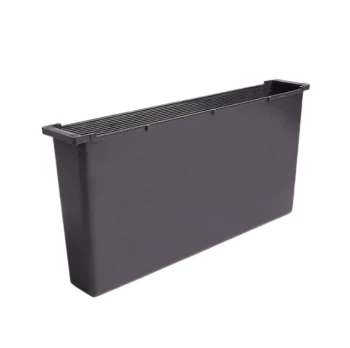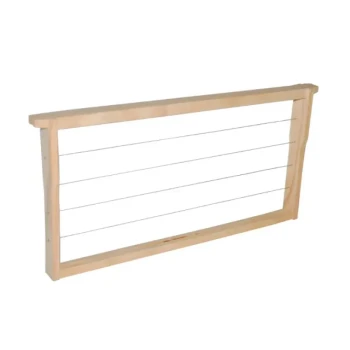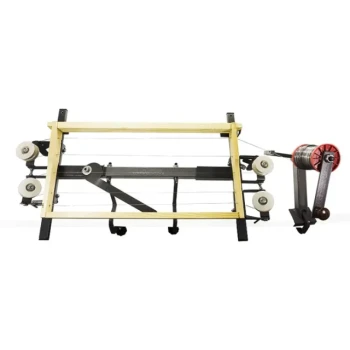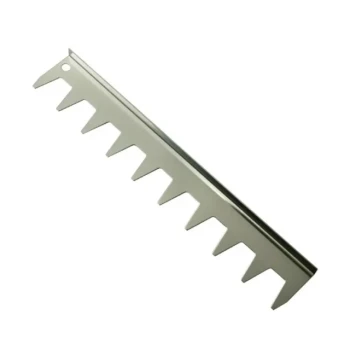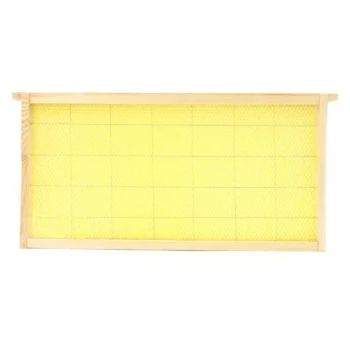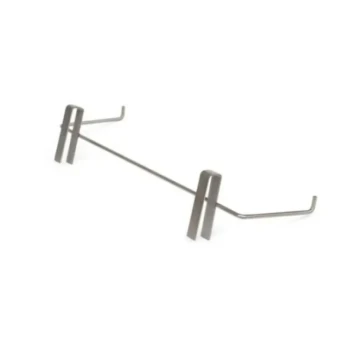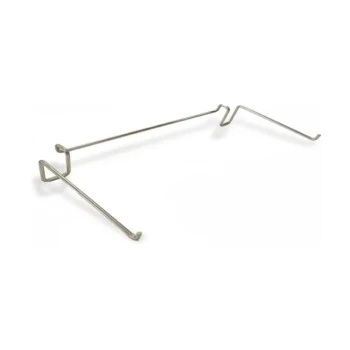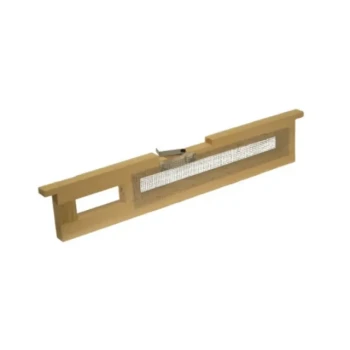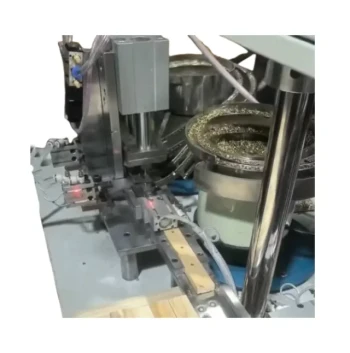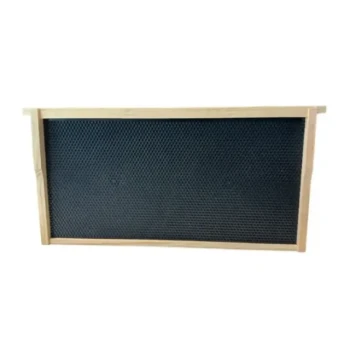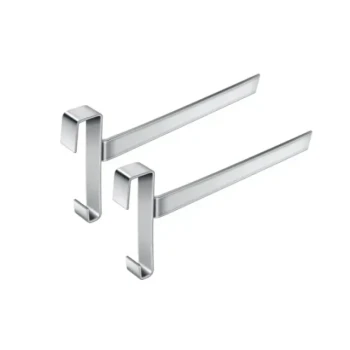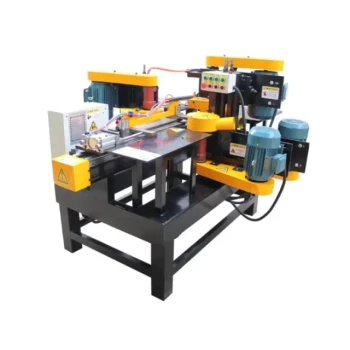In modern beekeeping, a bee frame is most commonly called a Langstroth frame. This standardized, rectangular frame is designed to be easily removable from the hive, allowing beekeepers to inspect the colony and harvest honey without destroying the comb. Its specific dimensions enable the crucial concept of "bee space."
The name of the frame is less important than understanding its function. The Langstroth frame's true innovation is its precise spacing, which prevents bees from sealing the frames together, making modern hive management possible.
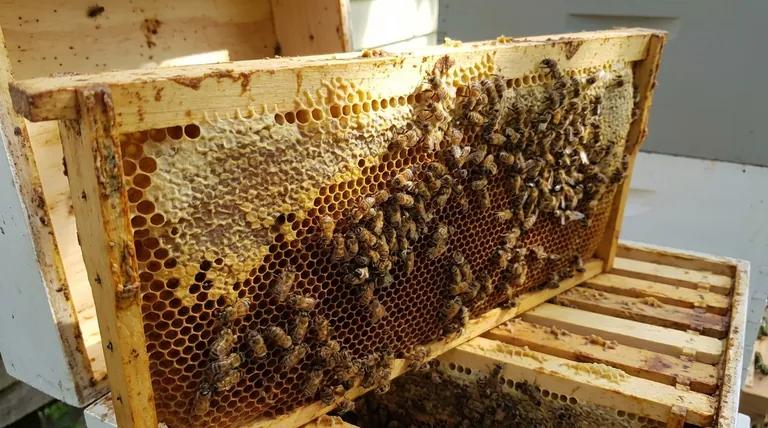
The Purpose Behind the Frame
A beehive is more than just a box; it's a carefully engineered system. The frames are the fundamental building blocks of the hive's interior, serving as the foundation upon which bees build their entire society.
The Frame's Core Function
Each frame provides a structure for the bees to draw out wax comb. This comb is used for two primary purposes: raising new bees (brood) and storing food (honey and pollen).
Why Removable Frames Revolutionized Beekeeping
Before the Langstroth design, beekeepers often had to destroy the comb to inspect a hive or harvest honey. Removable frames allow for detailed inspections of colony health, disease prevention, and efficient honey collection, all while minimizing disruption to the bees.
Frame Sizes and Their Roles
Langstroth frames are not one-size-fits-all. They come in specific sizes, each corresponding to a different part of the hive and a different function.
Deep Frames for the Brood Chamber
Deep frames are the largest size. They are used in the lower boxes of the hive, known as the brood chamber. This is where the queen lays her eggs and the colony raises its young.
Medium and Shallow Frames for Honey Supers
Medium and shallow frames are smaller and lighter than deep frames. They are placed in the upper boxes, called "honey supers," which are stacked on top of the brood chamber. Their smaller size makes a frame full of dense honey much easier for the beekeeper to lift.
Understanding the Trade-offs
While the Langstroth system is dominant, its standardization comes with considerations.
The Weight Factor
A deep frame full of brood and honey can be quite heavy. For beekeepers with physical limitations, managing these larger frames can be challenging, leading some to use medium-sized frames for their brood chambers as well.
Interchangeability and Cost
Using multiple frame sizes (e.g., deep for brood, medium for honey) means you cannot easily swap frames between different parts of the hive. Sticking to a single frame size for all boxes simplifies management and equipment needs, but it may not be as efficient for honey production or brood rearing.
Making the Right Choice for Your Hive
The frame size you use is determined by the hive box it goes into and your beekeeping goals.
- If your primary focus is the brood chamber: Use deep frames to give the queen ample, uninterrupted space to lay eggs.
- If your primary focus is honey collection: Use medium or shallow frames in your honey supers, as they are much easier to handle when full.
Ultimately, the frame is the key interface between the beekeeper and the colony, enabling a productive and sustainable relationship.
Summary Table:
| Frame Type | Primary Use | Key Characteristics |
|---|---|---|
| Deep Frame | Brood Chamber | Largest size; used for raising young bees; can be heavy when full. |
| Medium Frame | Honey Super / Brood Chamber | Versatile size; lighter than deep frames; easier to handle. |
| Shallow Frame | Honey Super | Smallest and lightest; ideal for honey sections easiest to lift. |
Ready to equip your apiary with the right frames?
At HONESTBEE, we supply high-quality, durable Langstroth frames and beekeeping equipment to commercial apiaries and distributors through our wholesale operations. Using the correct frames is essential for efficient hive inspections, honey production, and colony health.
Let us help you streamline your operations with reliable equipment that supports sustainable beekeeping.
Contact HONESTBEE today for wholesale pricing and to discuss your equipment needs.
Visual Guide

Related Products
- Professional In-Hive Bee Feeder HONESTBEE Frame for Beekeeping
- HONESTBEE Wired and Assembled Wooden Bee Frames Foundation for a Thriving Hive
- Professional Bee Frame Wiring Tool with Integrated Tensioning System by HONESTBEE
- Stainless Steel 9 Frame Hive Spacer Durable Precise for Commercial Beekeeping
- Assembled Wooden Bee Frames with Beeswax Foundation Ready to Use by HONESTBEE
People Also Ask
- What are the two most popular types of honey bee feeders? A Guide to Frame and Bucket Feeders
- What are the advantages of using frames in a Langstroth hive? Achieve Superior Hive Management and Honey Production
- Are frame feeders good? Maximize Your Hive's Health with the Right Feeding Strategy
- How does the design of Langstroth frames make them easier to operate? Leverage Bee Space for Efficient Hive Management
- Where should a bee feeder be placed? The Essential Guide to Hive Safety & Efficiency
